by Susan Dean | Feb 5, 2018 | Plants
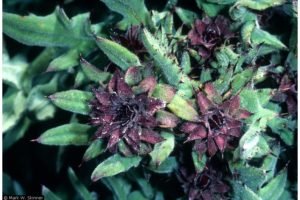
Fountain Thistle
Plants Summary
There are thousands of kinds of plants. Plants are producers and provide food and shelter for many animals. The basic structures of a plant are the roots, stem or trunk, and crown which usually includes the leaves, flowers, fruits and seeds
Though some plants are parasites and live off of other plants, most plants make their own food. The leaves are the food factories. Chlorophyll is the magical substance that gives them their green color and allows them to make their food from sunlight. Using sunlight for energy and H2O and CO2 they make the sugar glucose. 6 CO2 + 6 H2O + light energy = C6 H12 O6(sugar) + 6O2. The long chains of sugar molecules form the cellulose of plants. Another interesting thing is that if you are in the hospital and in need of nutritional strength they give you glucose.
Plants must have sunlight, water, CO2 from the air and nutrition to survive. They transpire through the little stoma located on the underside of leaves. These look like two little lips that open and close by shrinking or swelling. A plant will wilt or die if it doesn’t get enough water. Some will rot if they get too much water. They are as picky and individual as people!
Some plants like hot, some like cold. Some like it dry, some like it wet.
Some like shade, some like it sunny. Some are soft, some are hard.
Some are furry, some are thorny. Some are tiny, and some are huge.
Plants move! They may climb, crawl, float, or stand. Tropisms are the movement of plants in response to an external directional stimuli. Geotropism is a response to the force of gravity. Phototropism is when a plant moves towards light. Hydrotropism is when the roots of a plant move towards water. Roots are generally positively geotropic and grow downward. The roots are the sponges that soak up water and anchor the plant. Tropisms are controlled by differences in concentrations of growth hormones.
Some plants have leaves or flowers that open and close. In the mountains when the weather gets very cold rhododendron leaves will curl up. The sensitive plant closes it’s leaves if touched. Some flowers open and close at specific times like the morning glory, four o’clock, dandelion, or daylily. You might have students make a flower clock. Some flowers only bloom at night like the moonflower.
Plants cells have a cell wall that is lacking in animal cells. The wall gives the plant strength and support.
Plants come in a variety of sizes and colors. They may be white, orange, purple or many other colors. They grow from the soil, on bread, cheese, rocks, on other plants, in the ocean, lakes, deserts, and swamps. There are plants that look like animals and plants that look like stones. There are plants that live in trees like mistletoe, orchids, and Spanish moss. There are plants that climb like ivy, honeysuckle, grapevines, pumpkins, cucumbers, and morning glories.
Algae include some of the simplest plants know to man. They are mostly aquatic and range in size from one single cell living on trees, in snow, ponds and the surface waters of the ocean to strands of cells several meters long that make up seaweeds in the deep ocean. Algae in marine and freshwater plankton are important as the basis of food chains.
There are plants that act like animals. From spores slime mold crawls like a worm then becomes fixed like a stem. Some plants eat insects like the sundew, Venus flytrap, and pitcher plant. There is a fungus that catches worms with a lasso. My favorite is the microscopic euglena that has chlorophyll and can make it’s own food but moves and eats like an animal as well. Lichens are two plants that are partners. One makes food and the other finds water. They may grow on bare rock and break rock down to soil.
The leaves of deciduous plants change colors in the fall because cork forms in the stem of the leaf and cuts off the water supply. When there is no water the chlorophyll green fades. Carotenes and anthocyanins in the leaves give other colors. If sugar is trapped then the color turns red or purple. Leaves turn brown when dry and are dead. Galls in the leaves or stems of plants are bumps where insects have laid eggs. When a leaf falls from a plant it leaves a scar. Many of these scars look like cute little faces. The scar left by a leaf from the Tree of Heaven is the shape of a heart!
Some plants are poisonous or have poisonous parts such as poison oak and ivy, mistletoe, castor bean, yew, oleander, poinsettia, mountain laurel, wild cherry, and rhubarb
Plants may be evergreen or deciduous. Evergreens don’t freeze in winter and their leaves are tough and they remain on the plant through the winter. Deciduous plants lose their leaves in the fall.
Plant Biomes:
Pond – cattails, lilies, lotus, duckweed, algae, bulrush, calamus
Ocean – seaweed, kelp, diatoms, eelgrass, sea lettuce, sargassum
Desert – cactus, yucca, stone plant
Rainforests are tropical and plants are green all the time.
Mountains have many biomes
Plants may partner with other life; the indian pipe plant partners with a fungus, the monarch butterfly partners with milkweed.
Plants give us food (seeds feed the world), medicine, spices, drinks, clothing, jewelry, dyes and many more things than I can mention. I love plants!
EASY PHOTOTROPISM EXPERIMENT WITH KIDS
by Susan Dean | Feb 5, 2018 | Plants

Plants are the oldest and largest form of life on Earth(trees). Ask kids if they eat leaves, roots, stem, or seeds. You will be surprised at their answers. Yes, we eat all plants parts. There are six basic parts to a plant: root, stem, leaf, flower, fruit, and seed. Teach the song about plant parts. Seeds feed the world. Do you eat grass? Grains such as corn, rice, cereals, breads, and pasta are made from the seeds of grasses. Seeds travel on the wind, through a stomach, on animals or across the ocean and each kind of plant seed looks differently. Flowers make the seeds. Use the felt board to show the parts of a flower: sepals, petals, Stamen, pistil, sticky stigma, pollen, ovules. When a seed gets the right amount of water and sunshine and if it is in the right place, the seed will germinate and sprout and a new plant begins to grow. Plants need water, soil, and sunshine to grow. Ask them if they see plants going to the grocery for food. Leaves are the food factories of plants and through a process called photosynthesis they turn sunlight into the sugar glucose. Plants make their own food! On the bottom side of leaves their are the stoma that look like little lips. These open and close allowing the plant to breathe.
Materials: hand drum for music, paper and pencils for drawing the parts of a flower. Samples of many different kinds of seeds for them to examine. lima beans, paper towels, baggies, Felt board of parts of a flower. Pots of soil and seeds.
Activities: Learn song about the parts of a plant and “I am a Sprout”. Examine different kinds of seeds. Make a felt board flower showing the parts or a felt board plant showing the parts of a plant. You can also draw it on a wipe off board. Dissect flowers. Wrap 3 lima beans in a wet paper towel and seal in a plastic snack bag to germinate. Plant some seeds in seed pots.
Happy faces in the cross-section of a blade of grass. Aren’t natures designs amazing!

Such Beautiful Stems

Phototropism
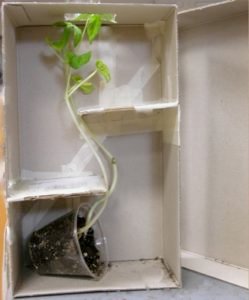
Leaves unfolding
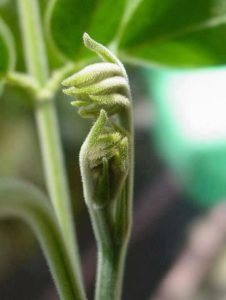
by Susan Dean | Feb 5, 2018 | Plants
The Skill of Classification
At its simplest, classifying means organizing objects by their similar or dissimilar characteristics. The process of classifying helps children obtain information about the world around them, as well as developing thinking and reasoning abilities.
Classifying can start as early as toddlerhood, when a child might put all the blue blocks, red blocks, and yellow blocks in their respective piles. They might not even know the word for each color yet, but they can observe the differences between them.
“One of these things is not like the other”, goes the famous Sesame Street song, and children are extremely adept at picking out things that just don’t fit. Think about what they have to do to figure out these kinds of puzzles: first, they must decide what universal attribute the majority of the items share, and then they must decide which item doesn’t fit the pattern. It’s a two-step process.
Classification becomes more sophisticated when children begin to notice that items can share some attributes but differ in others. For instance, buttons could be sorted by color or shape. Regrouping a collection of objects can strengthen a child’s ability to closely observe and organize according to specific characteristics.
Younger children are usually focused on very obvious characteristics, like color, size, and shape. Examples of these activities include button or bead sorting; small, medium, and large; and shape sorters where only the correct shape will fit through each hole. More advanced classification work includes living/non-living, land/air/water, and fruit/vegetable.
An older child will begin to look at objects with more discrimination: they may notice that while oranges, lemons, and limes are different in color, they are all citrus fruits. Or they may realize that insects, while varying widely in appearance, all have three body parts and six legs. Montessori for Everyone
by Susan Dean | Feb 5, 2018 | Plants
Black Pepper 
Brussels Sprouts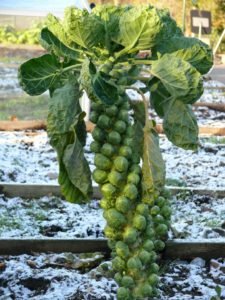
Cacao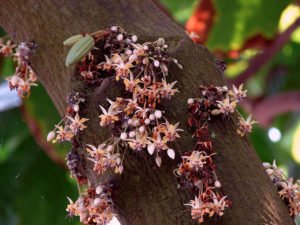

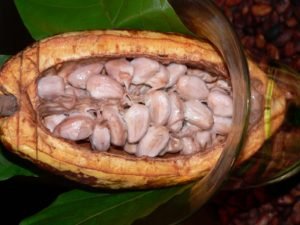 Capers
Capers
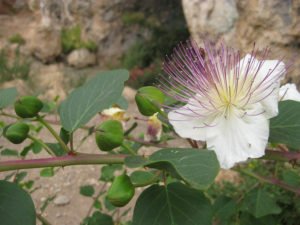

Cashew

Cinnamon

Chick Peas

Cloves

Coffee
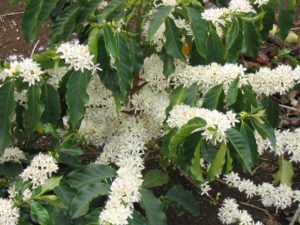
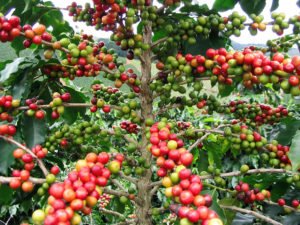
Kiwi
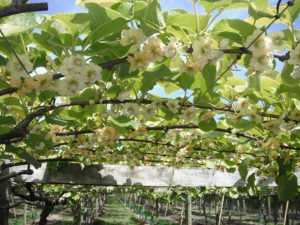
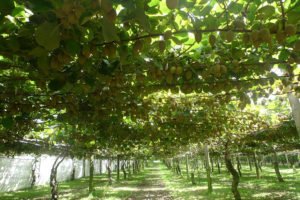
Mango
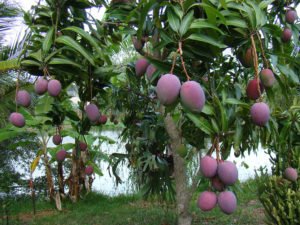
Peanut
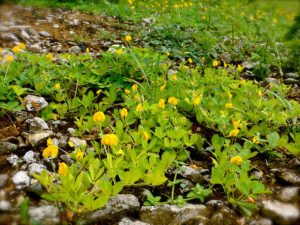

Persimmon

Pistachios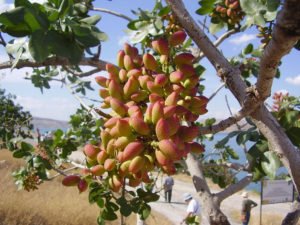
Pineapple
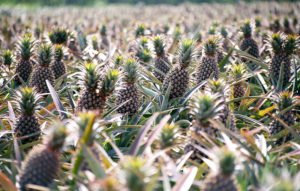
Pomegranate
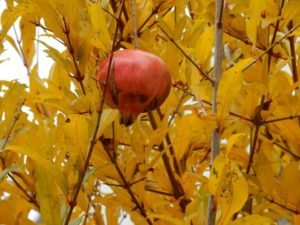
Saffron
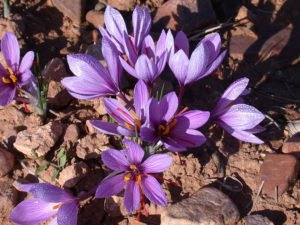

Sesame
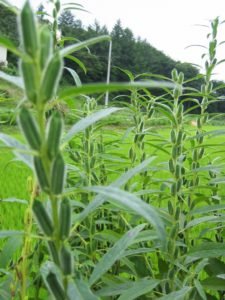

Starfruit
Tea
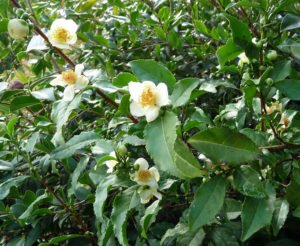
Vanilla
Black Pepper
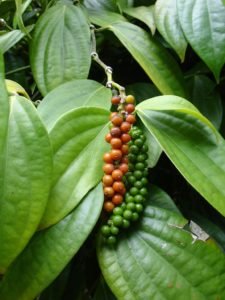
Almond
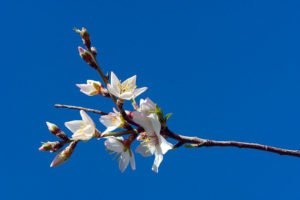

by Susan Dean | Feb 5, 2018 | Plants
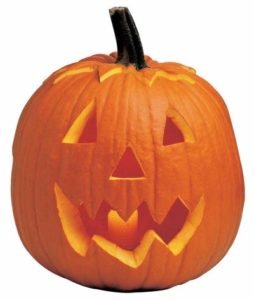
The History of Halloween and the Jack-O-Lantern
People have been making jack-o-lanterns at Halloween for centuries. The practice originated from an Irish myth about a man nicknamed “Stingy Jack.” According to the story, Stingy Jack invited the Devil to have a drink with him. True to his name, Stingy Jack didn’t want to pay for his drink, so he convinced the Devil to turn himself into a coin that Jack could use to buy their drinks. Once the Devil did so, Jack decided to keep the money and put it into his pocket next to a silver cross, which prevented the Devil from changing back into his original form. Jack eventually freed the Devil, under the condition that he would not bother Jack for one year and that, should Jack die, he would not claim his soul. The next year, Jack again tricked the Devil into climbing into a tree to pick a piece of fruit. While he was up in the tree, Jack carved a sign of the cross into the tree’s bark so that the Devil could not come down until the Devil promised Jack not to bother him for ten more years.
Soon after, Jack died. As the legend goes, God would not allow such an unsavory figure into heaven. The Devil, upset by the trick Jack had played on him and keeping his word not to claim his soul, would not allow Jack into hell. He sent Jack off into the dark night with only a burning coal to light his way. Jack put the coal into a carved out turnip and has been roaming the Earth with it ever since. The Irish began to refer to this ghostly figure as “Jack of the Lantern,” and then, simply “Jack O’ Lantern.”
In Ireland and Scotland, people began to make their own versions of Jack’s lanterns by carving scary faces into turnips or potatoes and placing them into windows or near doors to frighten away Stingy Jack and other wandering evil spirits. In England, large beets are used. Immigrants from these countries brought the Jack o’lantern tradition with them when they came to the United States. They soon found that pumpkins, a fruit native to America, make perfect Jack O’ lanterns.
HALLOWEEN is a night for dressing up, ghost stories, spooky parties, trick-or-treating and pumpkin carving. Most people don’t know that Halloween is actually based on an ancient Celtic holiday known as Samhain (pronounced “sow wan”), which means “summer’s end”.
It was the end of the Celtic year, starting at sundown on October 31st and going through to sundown November 1st. It was a night to honor loved ones that had passed on since the veil between their realm and ours is at it’s thinnest on that night. Celebrated for centuries by the Celts of old, Witches and many other nature based religions, it is the most magical night of the year. It is the Witches’ New Year, and the Last Harvest. Although the religious significance of it has passed for the general public, Halloween is a “magical” night for all!
On this magical night, glowing jack-o-lanterns, carved from turnips or gourds, were set on porches and in windows to welcome deceased loved ones, but also to act as protection against malevolent spirits. Burning lumps of coal were used inside as a source of light, later to be replaced by candles.
When European settlers, particularly the Irish, arrived in American they found the native pumpkin to be larger, easier to carve and seemed the perfect choice for jack-o-lanterns. Halloween didn’t catch on big in this country until the late 1800’s and has been celebrated in many ways ever since!
There is a strong connection in folklore and popular culture between pumpkins and the supernatural. Famous examples include the following:
A commonplace motif of people being turned into pumpkins by witches.
In Cinderella, the fairy godmother turns a pumpkin into a carriage, but it later reverts to a pumpkin.
Linus’ belief in the Great Pumpkin in Charles M. Schulz’s comic strip Peanuts.
Pumpkin juice has magical effects in the short story “Pumpkin Juice” by R. L. Stine.
In the Harry Potter novels pumpkin juice is a favorite drink of the students of Hogwart’s School of Witchcraft and Wizardry.
The pumpkin is hurled by the “Headless Horseman” in Washington Irving’s The Legend of Sleepy Hollow
Jack Pumpkinhead, a character in the Oz books of L. Frank Baum, has a pumpkin for a head on a wooden body that is brought to life in the second book.
In Tim Burton’s The Nightmare Before Christmas, the main character, Jack Skellington, is “the Pumpkin King.”
Precious Ramotswe, the fictional detective from Botswana in The No. 1 Ladies’ Detective Agency series of novels by Scottish author Alexander McCall Smith, often cooks and eats pumpkin.
In a short fiction by Nathaniel Hawthorne, Feathertop from 1852, a witch turns a scarecrow with a “pumpkinhead” into a man.
by Susan Dean | Feb 5, 2018 | Plants
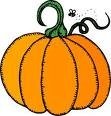
THE PUMPKIN
The name pumpkin originated from the Greek word for “large melon” which is “pepon. Pumpkins are native to North America and have been grown in America for over 5,000 years. Native Americans called pumpkins “isquotersquash.”
Pumpkins have a thick, orange or yellow shell that is creased from the stem to the bottom and contains the seeds and pulp. They are usually orange or yellow but some fruits are dark green, pale green, orange-yellow, white, red and gray. Pumpkins are a fruit! Pumpkins, like gourds and other squash are members of the Cucurbitacae family, which includes cucumbers, gherkins, and melons.
Pumpkins are monoecious, having both male and female flowers on the same plant. The small ovary at the base of the petals distinguishes the female flower. The flowers have extremely short life spans and may only open for one day.
Pumpkins are a warm-weather crop and are hardy. If many leaves and portions of the vine are removed or damaged, the plant can very quickly re-grow secondary vines to replace what was removed. The native squash bee has historically pollinated them, but this bee has declined (pesticide sensitivity) and today honeybees pollinate most commercial plantings. If there are inadequate bees for pollination, gardeners hand pollinate.
Pumpkins are grown for agricultural purposes (animal feed) and ornamental sales. Antarctica is the only continent unable to produce pumpkins. The biggest international producers of pumpkins are the United States, Mexico, India, and China. The traditional American pumpkin is the Connecticut Field variety. 1.5 billion pounds (680,000,000 kilograms) of pumpkins are produced each year in the U.S. The top pumpkin-producing states are Illinois, Indiana, Ohio, Pennsylvania, and California. According to the Illinois Department of Agriculture, 95% of the U.S. crop intended for processing is grown in Illinois. Nestlé produces 85% of the processed pumpkin in the U.S.
Farmers from all over the US compete to determine who can grow the heaviest pumpkin. Festivals are dedicated to the pumpkin and these competitions. The town of Half Moon Bay, California, holds an annual Art and Pumpkin Festival, drawing over 250,000 visitors each year and including the World Champion Pumpkin Weigh-Off. The winning pumpkin regularly tops the scale at more than 1500 pounds. In 1981 Howard Dill (of Nova Scotia) broke the record with a pumpkin near 500 pounds (226.80 kilograms). Dill patented the seeds used to grow this giant pumpkin, deeming them Dill’s Atlantic Giant seeds, and drawing growers from around the world. Dill is credited for all of the giant pumpkins today, most of which are borne from crossing and re-crossing his patented seed with other varieties. By 1994, the Giant pumpkin crossed the 1,000-pound (453.59-kilogram) mark. The current world record holder is Chris Stevens’s 1,810-pound Atlantic Giant pumpkin, which in October 2010 surpassed Christy Harp’s previous 2009 record of 1,725 pounds.
Pumpkin chucking is a competitive activity in which teams build various mechanical devices designed to throw a pumpkin as far as possible. Catapults, trebuchets, ballistas and air cannons are the most common mechanisms. Some pumpkin chuckers breed and grow special varieties of pumpkin under specialized conditions to improve the pumpkin’s chances of surviving a throw.
Native Americans dried strips of pumpkin and wove them into mats. They roasted long strips of pumpkin on the open fire and ate them. The origin of pumpkin pie occurred when the colonists sliced off the pumpkin top, removed the seeds, and filled the insides with milk, spices and honey. The pumpkin was then baked in hot ashes. Most parts of the pumpkin are edible, including the fleshy shell, the seeds, the leaves, and even the flowers. Pumpkins are very versatile in their uses for cooking. When ripe, the pumpkin can be boiled, baked, steamed, or roasted. Seeds are roasted and eaten as a snack.











 Capers
Capers



























